We’ve seen them all before, a cylindrical (or spherical) things sitting on someone’s credenza or countertop. They’re popping up everywhere and it’s not wonder why! The Amazon Alexa is so much more than a speaker. Alexa is a device that wears many hats; virtual assistant, smart home controller, source of entertainment and so much more.
Today, we’re going to give you a crash course on everything Alexa. By the time you’re finished reading this guide, don’t be surprised if you begin contemplating purchasing one of your very own.
Without further ado, let’s get started!
What, Exactly, Is Amazon’s Alexa?
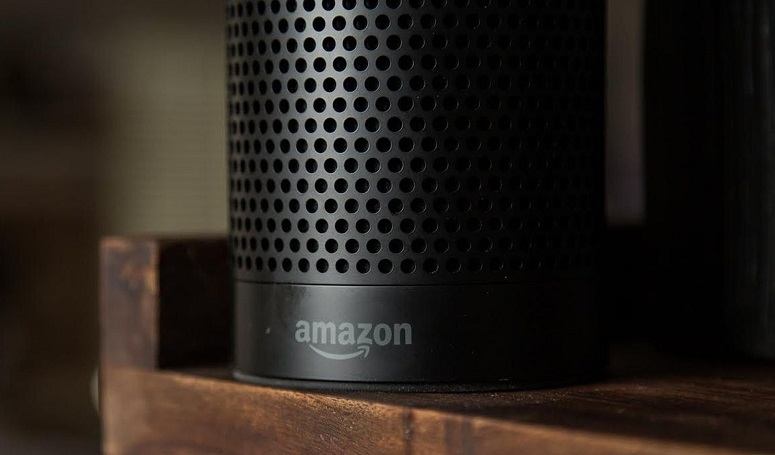
Way back in November of 2014, Amazon announced the release of their virtual voice assistant, Alexa, and her cozy little home, the Echo – a cylindrical smart speaker that has several different iterations.
As a voice assistant, Alexa listens for you to say a wake up word and command. Then she will give you answers to questions, reminders, and other useful information whenever you ask.
Since then, people have been relying on the disembodied voice to help them manage their day to day. But, what’s the story behind Alexa?
What Is A Smart Speaker?
Before we go into further detail about what Alexa is and what it can do, we first want to clarify what a smart speaker is. The speakers were originally intended to serve as a way for users to listen to their media library via Bluetooth technology and Wi-Fi connectivity.
Some of these speakers feature a voice-activated virtual assistant, like Alexa, and they can range in style, features, design, and price.
There are some speakers that use a base station that’s outfitted with a magnetic levitating speaker that you can place on ferrous metal surfaces anywhere in your home. These base stations usually include a subwoofer on the base station to make low-frequency sounds sound more powerful.
With that out of the way, let’s talk about Amazon Alexa.
The History Of Alexa

The inspiration for Alexa comes from the on-board computer voice and conversational system on the Starship Enterprise from the popular sci-fi television series, Star Trek.
While the idea for the cloud-based virtual assistant has comes from science fiction, the name claims to be reminiscent of Ancient Egypt’s Royal Library of Alexandria. It was chosen because the X is a hard consonant and is easier for the program to understand with more accuracy.
Apparently, Amazon liked the name so much, they even have a subsidiary company named “Alexa Internet, Inc.” which provides commercial analytics and web traffic data. In June of 2015, Amazon announced a program that would invest millions of dollars in companies who were creating voice controlled technologies and skills. The funds have helped companies like:
January 2017 was the first event for the Alexa Conference in Nashville, Tennessee. This conference was a gathering for Alexa developers to come together to showcase innovative products, services, tools, and ecosystems.
The next conference is slated for January 15 and 16 in 2019. The Alexa World Fair will be open on January 17 for Alexa enthusiasts to see what developers have been working on.
What Smart Speakers Work With Alexa?
Originally when Alexa was first introduced, Amazon only had the Echo. However today there are quite a few smart speakers that have Alexa capabilities, many of which are Amazon products, but there are some other speakers with Alexa too.
The Amazon Echo Line
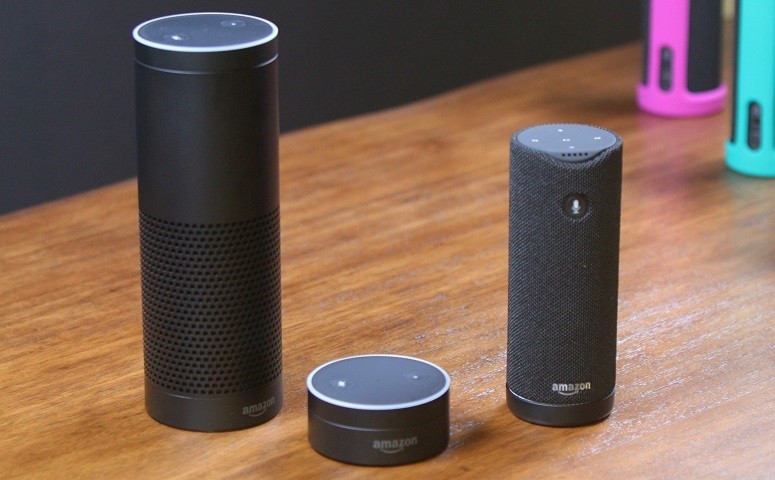
Within a few short years, the Amazon Echo has gone through some changes, had some “children” and now they’re one of the prominent smart speakers you’ll find in people’s homes.
Let’s take a look at all the different types of Echo products (we’ll go into what Alexa can do a little later in this guide).
Amazon Echo
We like to think of the Echo as the mother of all Alexa devices because this is where it all started. Right out of the box, you can begin using the Echo.
It features a high-quality built-in speaker, allowing you to play your favorite music, podcasts, or audiobooks with clarity and it’ll sound pretty darn good. Also, since the Echo features Bluetooth technology, you can connect other Bluetooth devices to it.
The Echo received a new look in the later part of 2017 and the second-generation design is sleek and unassuming, so you can leave it on the side table or kitchen counter without worrying about it sticking out like a sore thumb.
The Echo is good for those who want an Alexa device that they can use as a Bluetooth speaker as well as a virtual assistant. We recommend putting the Echo in a common area like the living room, a rec room, the kitchen, and even a home office.
Amazon Echo Plus
The Echo Plus is pretty much the same as the regular first-generation Echo except it features a built-in ZigBee smart home hub. Unfortunately, if you were hoping that you could use the Plus to manage all of your smart home devices, you will need a third party hub to manage all of the devices.
The Echo Plus is good if you’ve always dreamed about having a smart home but you don’t have the budget to go full-on Smart House like the one from Disney’s Smart House circa 1999.
If you have any smart home things like smart plugs, smart lights, smart thermostats and etc., you may be better off with another Amazon Echo product (trust us, there’s something for everyone!).
Amazon Echo Dot
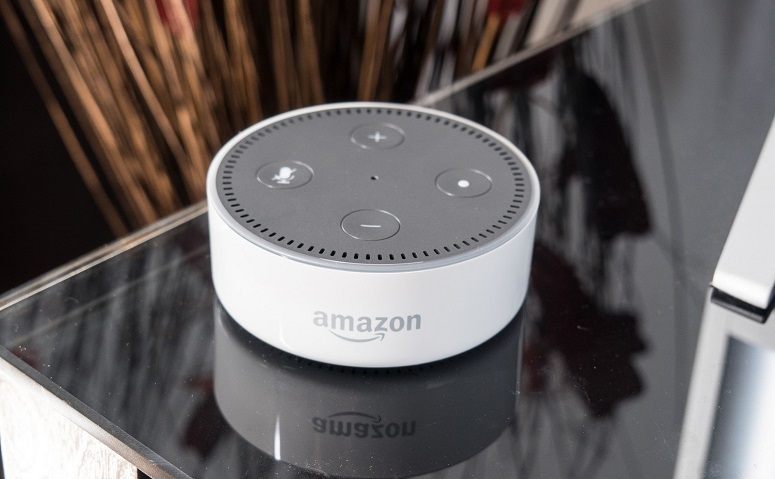
As the name would imply, the Dot is one of the smaller devices in this lineup, but it’s also much cheaper than the other Echo devices. With the Dot, you can do everything that the second-generation Echo can do. The only drawbacks to the Dot are that they speakers aren’t as good as the second-generation Echo and you won’t be able to make phone calls with it.
The Dot is a great option for those who want to test the waters with Alexa without spending a lot of money on a regular Echo device. The Dot is also great if you want to put them in different rooms.
Amazon Tap
Think of the Amazon Tap as Alexa on wheels, minus the wheels. The Tap is smaller than the Plus, but it doesn’t need to be plugged into a wall in order to work. Instead, there is an internal battery that you can recharge, which you can do by putting it on the charging cradle.
Like the Dot, you won’t be able to make phone calls with the Tap. You also cannot connect other Bluetooth devices to it like you can with the Echo. However, this is a good option if you want to take Alexa with you around the home, then this is a good fit.
Amazon Echo Show
One of the biggest differences you’ll see with the Echo Show is that it has a screen. The Echo Show works the same as the second-generation Echo, except you can watch videos, movies, and even have face-to-face conversations thanks to the video call feature which allows you to make video calls to others with an Echo Show or someone who has the Alexa app on their Android or iOS smart phone.
The Echo Show also features something called Drop In. This feature allows you to specify who can start a video connection on your Echo Show at any time. Some people may find this a little unsettling, but Amazon claims this feature was primarily designed to be used as a way to monitor elderly family members or small children and babies.
While this may sound like a perfect solution to all of your Alexa needs, you might want to hold off just yet. The Echo Show takes up more space than any of the other products mentioned here and the screen isn’t that impressive. Also, because there is a camera on the device, there are some potential security risks that you should be aware of.
Unfortunately, The Echo Show is the most expensive Echo on this list and it’s kind of bulky in comparison to other models. With that said, the Echo Show is good for those who want a screen to watch media content while in the kitchen, or if you want to view your home’s security camera footage.
Amazon Echo Spot
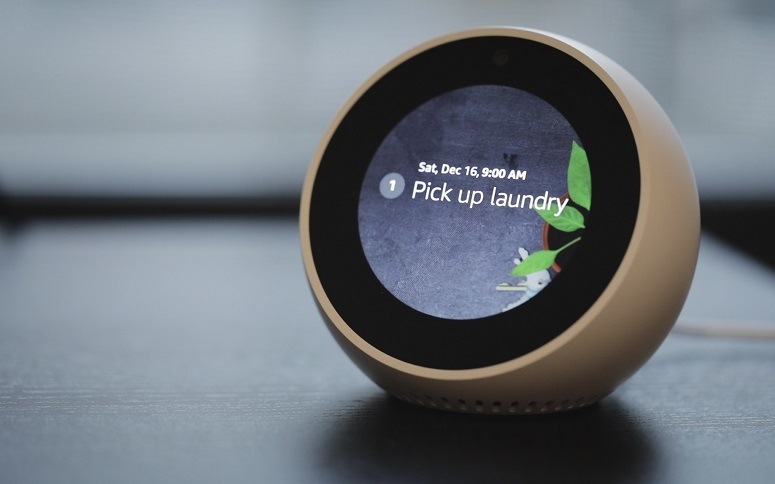
The Echo Spot looks more like one of those Magic 8 balls than the other Echo devices on this list. It features a 2.5-inch touch screen that you won’t want to use to watch late night videos on. Much like the Echo Show, you can make video calls and everything else a normal Echo can do.
The drawback to this is that doesn’t have the best speakers. Sure, you can talk to and listen to Alexa, but you won’t be able to rock out to Wham! while you get dressed in the morning.
The Spot is a good choice if you want an alarm clock sized Echo device for your bedside table that’ll give you touch screen capabilities. But, since it’s more expensive than the second-generation Echo, you may want to reconsider – especially since the speakers aren’t the greatest.
Other Alexa Smart Speaker Options
The Echo is a great product, no doubt, but if music is really important to you, you may be interested in Echo-alternatives that boast speakers that are better than the ones on the Echo. These Alexa-enabled options include (but not limited to):
What Can Alexa Do?
Now that you know what Alexa is and the different types of smart speakers with Alexa capabilities, let’s get into the good stuff – what can Alexa do. Simply put, Alexa can do a lot.
Home Automation
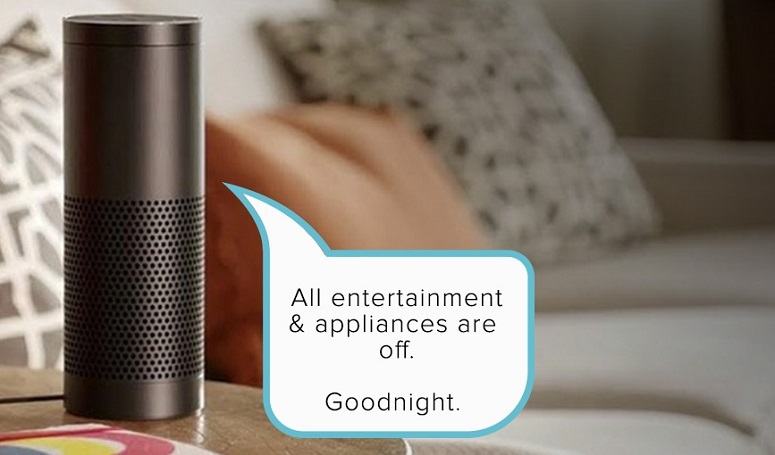
One of the best things about Alexa is that you can turn your ordinary home and the ordinary things in it, into a smarter version of itself. There are many smart home products that feature Alexa integration and they include:
With home automation, you can check to see who is at your front door while you’re giving your baby a bottle. You can dim the lights when you go out for the evening. You can even adjust the temperature in your home. This can all be done just by saying a command.
Shopping/Ordering
It would make sense that if you’re using an Amazon virtual assistant, shopping is going to be a cinch! You can tell Alexa to order a box of cat litter when you’re running low, and if your Amazon account is linked to Alexa, it’ll place the order. If you have Prime, it’ll arrive in 2 days.
Not only can you shop Amazon with Alexa, you can also order take out and delivery with the appropriate skills (more about Alexa Skills in a bit).
Music
With Alexa, you can hear music from your media library, or you can link up with third-party streaming apps like Spotify, SiriusXM, AnyPod (for podcasts), TED Talks, Audible and much, much more.
If you have multiple Echo devices in your home, you can group the devices together so they all play the same music. So if you have a Spot in the bedroom and you need to go to the den, the song that’s playing on your Spot is also playing on the device you have in the den.
Sports
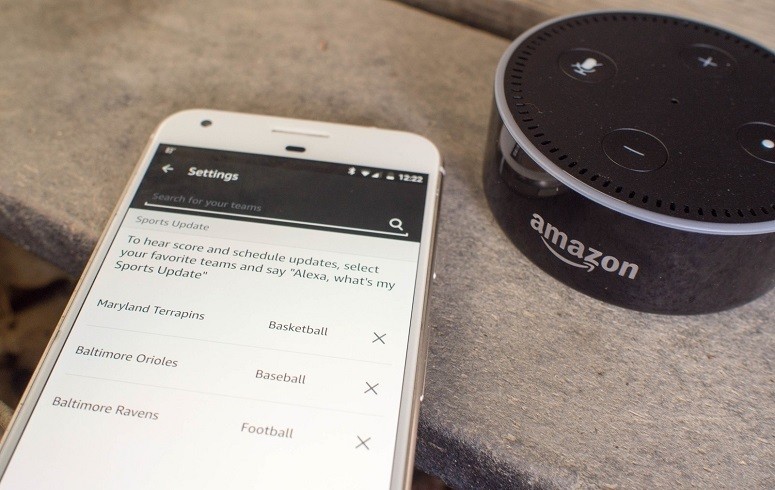
Sports lovers never have to worry about not knowing how their favorite sports teams are doing because you can just Alexa. She can give you up-to-date information regarding team stats, player stats, scores, and much more. You can even find some skills that are dedicated to specific sports teams such as the New England Patriots, the LA Lakers, and other teams.
Health
You can use Alexa to set reminders to take medication and workout, but there’s much more that she can do. With the appropriate skills, you can clear your head and meditate, get information on certain medications, even sync with fitness trackers.
You can also find skill that will help you manage your diet, give you healthier recipe options, and track your healthy (or not-so-healthy) habits.
Home Services
With the right skills enabled, you can ask Alexa to connect you with a pre-screened home service professional and the skills HomeAdvisor and TaskRabbit are perfect examples of this. You can find plumbers, handymen, house keepers, gardeners, delivery people and so much more.
You can also enable the Lyft or Uber skills when you need a ride and your car isn’t working. All you have to say is, “Alexa, ask Uber/Lyft to request a ride.”
All of these skills are incredibly useful for the elderly or the disabled who can’t get around very easily because they help the individuals maintain their independence and get their errands done without having to rely on family, friends, or public transportation.
News
If there’s one thing people love about Alexa is that she can give you news updates whenever you ask. You can do this by saying, “Alexa, what’s my flash briefing?” You can set up various news skills that Alexa can draw from that’ll make up your flash beefing.
Weather
If you want a weather update, Alexa can do that. She can tell you what the weather forecast is going to be, but with a skill like Big Sky, she can give you more detailed reports.
Business
If you’re a business savvy individual, you’ll want to stay up to date with the latest happenings in the business world. You can ask Alexa to give you stock market updates, have her manage your PayPal account, store cards, insurance, and credit cards.
Entertainment
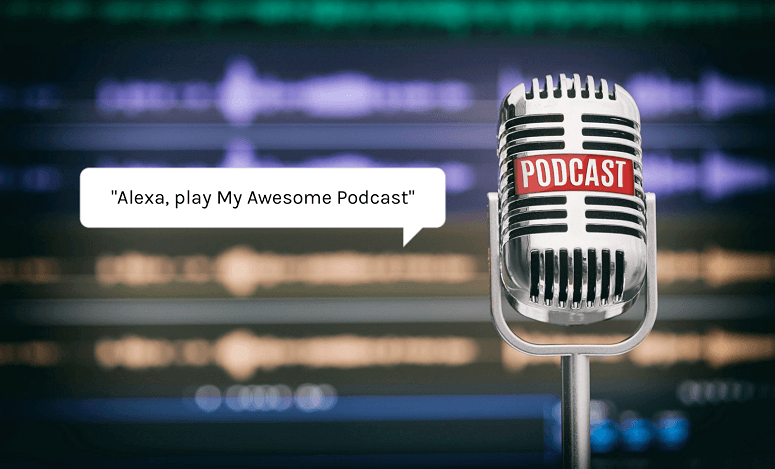
We mentioned that Alexa can play all sorts music, podcasts, and audiobooks, but she can keep you entertained in more ways than that. You can enable skills where she can tell you jokes and riddles. You can enable skills that’ll allow you to keep your mind sharp with trivia and questions of the day. You can even enable skills to manage your social media accounts.
Calling
Alexa devices allow you to make phone calls (and video calls with the Show and Spot) handsfree. You can make free phone calls to any phone number (landline or mobile) in the United States, Mexico, and Canada for free. To make these calls, all you have to do is allow Alexa to access your contacts through the Alexa app from iTunes or Google Play.
Along with calling and video calling, you can turn multiple devices into an intercom system for your home. You can say something like, “Alexa, tell everyone it’s time for school.” And she’ll send a voice memo to any Echo devices in the home. Note: for the message to go through, you’ll need to say either “tell” or “broadcast” and then your message.
Safety
Safety is a big concern for a lot of people. Ask My Buddy is a skill that comes in handy for older or disabled people because if there’s ever an emergency, you can say, “Alexa, Ask My Buddy to send help.”
After the command has been issued, Alexa will send a notification to people you add onto a contact list for the app. A new feature was introduced in September 2018 and it’s called Alexa Guard.
This feature will listen for any suspicious sounds like a broken window or a smoke alarm going off, and if Alexa does hear something like these, she will send you a notification to your phone. If you have the Ring security system or ADT, Alexa will automatically send a notification to dispatchers so they can send help right away.
Miscellaneous
Alexa can pretty much do anything you ask of her. You can ask her to find you new recipes and play instructional videos. You can ask her to give you daily affirmations when you’re feeling blue, or you can use a skill to learn a new language.
You can use her to create routines where one voice command will set off a chain of activity. For example, you can say, “Alexa, Good morning.” And that could turn on the coffee pot, turn on the bathroom light, and increase the temperature – just as long as they are smart devices or they are connected to a smart outlet, switch, or dimmer.
What Are Alexa Skills?
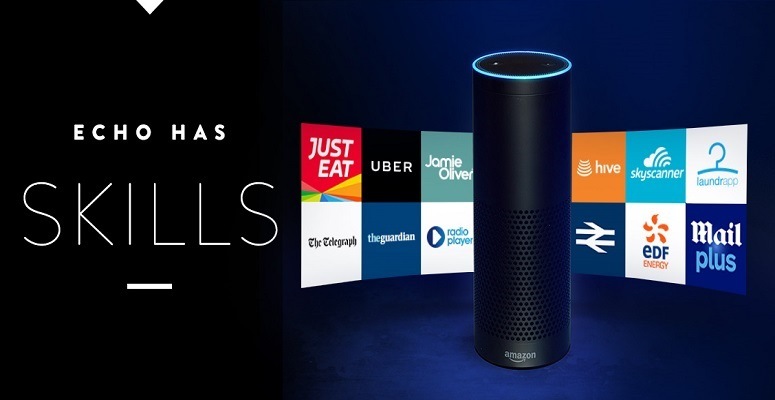
So far, we mentioned Alexa skills quite a bit and we want to explain what they are. Basically, a skill is like an app for your smart phone. You can visit the Alexa Skills section on Amazon and you’ll find a large array of skills from a wide variety of categories. With over 30,000 skills to choose from, we’re certain you’ll be able to find something to suit your needs!
If you don’t, you can create your own skills by using the Alexa Blueprint portal. With Sadly, this portal is only available to people in the United States for the time being.
Here’s how you can begin making your own Alexa Skills:
Confirm Account Details
To begin working on your first skills, you’ll need to confirm your account by going to https://blueprints.amazon.com/ and click on the “Skills You’ve Made” link at the top of your screen. There, you’ll be asked to log in with your Amazon account information. After logging in, you’ll see your name, address and contact information.
You will also see a “Display Name” field where you can change the first and last name. This is helpful if you want to make your awesome new skill public, but you don’t want people to know your full name. You’ll be able to do this by verifying your details and creating an Amazon Developer Account.
Choose A Template
Next, you’ll get to choose a template, or Blueprint, for your new skill. There are more than 20 options to choose from and they range from making your own trivia game and fairy tale story for your children, to creating a chore chart or a personal training program. If you’re stuck for ideas, look at the “Featured Blueprints” to get some ideas.
Reading Details
After you chose your Blueprint, you’ll want to click on it. It’ll open up a description of the desired Blueprint such as how to create the skill and what to do with it after you’re finished.
In the details, you’ll also see a Play button and a progress bar. These will let you hear a sample skill that was created using Blueprint. By playing the sample, it may give you a few ideas for your own skill.
After reading the details, you’ll want to click on the “Make Your Own” link where you’ll be able to begin the Blueprint-creating process.
Fill In The Fields
On the next screen, you’ll find fields that have already been filled in. Don’t worry though because you can delete the text and fill in the fields with your own content to make it your own. After doing this, hit the “Next” button on the top right corner.
Name Your Skill
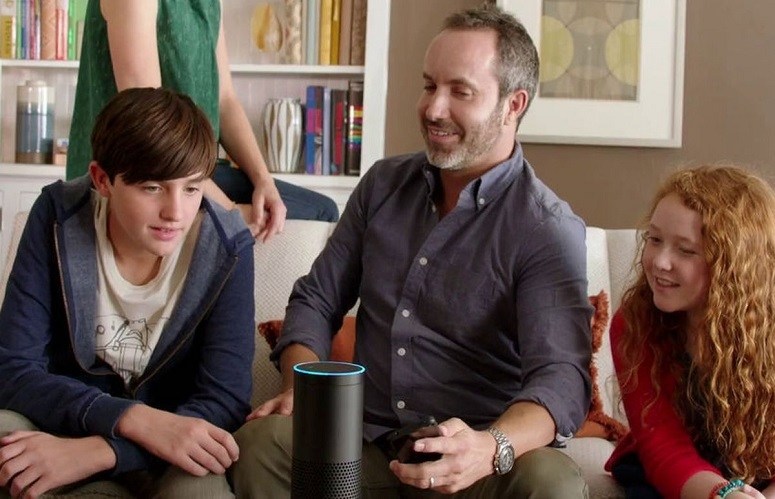
Now that your skill has been filled out, you’ll want to pick a name. As great as Alexa is, she still has difficulty recognizing first and last names, so if you’re creating a skill to tell fun anecdotes about how you met your spouse, you’ll want to name it something like “Our Fondest Memories” or “How We Fell in Love.”
If Alexa isn’t responsive or cannot understand you when you try to use the skill, you may have to go back and rename it so that is easier for her to understand. You can find your skill by clicking on the “Skills You’ve Made” link and click the “Edit” button.
Wait For The Notification
It’ll only take a few minutes for your skill to be ready to use. You’ll want to look out for a green notification message located at the top of the Blueprint’s page. This green message indicates the skill is available to use on any Alexa-enabled device that’s linked to your Amazon account.
Launch Skill
To begin using your brand new skill, you’ll want to use the voice command, “Alexa, open [name of your skill].” You can use this to make sure that your skill works properly. If it doesn’t, you can always go back to the “Skills You’ve Made” link and make the necessary adjustments.
Disabling/Deleting Skills
You can create as many skills as you’d like because there’s no limit to how many you can make. However, if you find that you don’t need a particular skill anymore, or you want to disable one skill to test out a similar skill, you can do that quite easily by going to the “Skills You’ve Made” link.
Who Can Benefit From Using Alexa?
Having a virtual assistant to help you with your day to day has many benefits and benefits a lot of people. As Henry Claypool, a consultant for American Association of People with Disabilities, states in an article on Consumer Reports:
“The voice-activated feature is a way to address a number of barriers for people who can’t move their hands, the specific challenges of people with disabilities may seem routine to others.
But simply getting groceries or scheduling appointments can be taxing for someone who has difficulty operating a telephone or navigating the internet.” This can also be said for elderly individuals who struggle with the same tasks.
What’s great about Alexa is that it isn’t just for residential use. Businesses can use Alexa to help them have “intuitive interactions with the technology they depend on” and give commands in a way that feels natural.
Alexa for Business can improve the productivity of employees, simplify the conference experience, manage and monitor other Alexa devices within the business on a central hub, and even build private skills that are specific to your business’ needs.
Final Thoughts

As you can gather from this extensive guide, Alexa is a useful helper that can make almost every aspect of your day to day life so much simpler and more stream lined. You can enjoy all the things she can do with just a single device like any of the Amazon Echo devices.
There are also other options that you can use, such as an Alexa-compatible smart speaker like the ones we mentioned if you want to be able to enjoy your music because the Echo speakers aren’t going to pack a punch.
Having Alexa in your home is kind of like having an ethereal buddy that is there whenever you need them. You can ask Alexa to tell you a joke, sing you a song, or what the weather forecast is. Whatever information or reminders you need, Alexa can do it.
If you’re considering purchasing one of the Amazon Echo devices, head over to our buying guide. There, you’ll find four mini-reviews of Echo devices that we think you’ll enjoy. In the guide, we also include some key things to think about when purchasing an Echo and our ultimate recommendation.
Leave us a comment below and tell us what kind of things you’d do with a virtual assistant. Would you keep her around to tell you riddles, or would you use her to control all of your smart home devices. We want to hear from you!
Resources
Leave a Reply